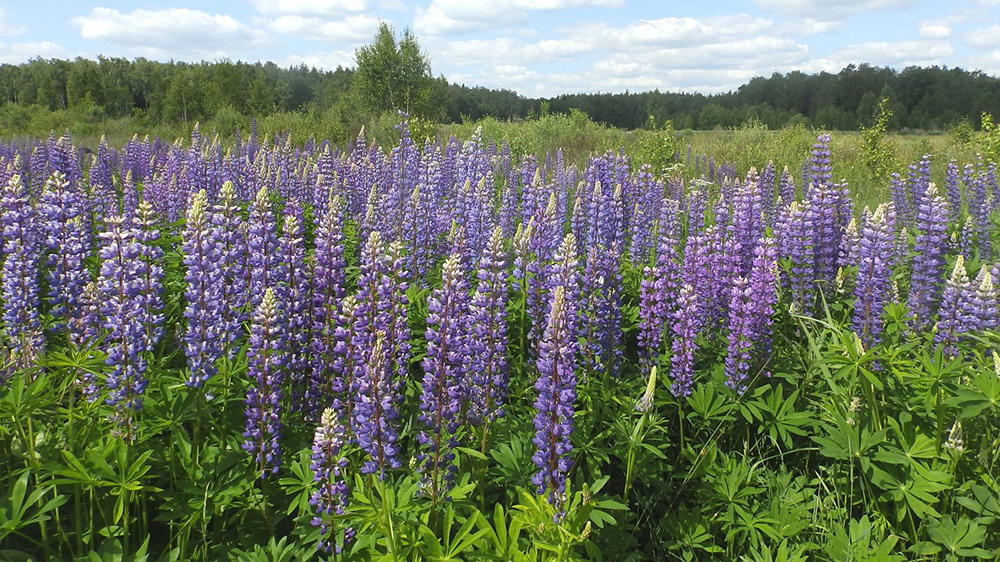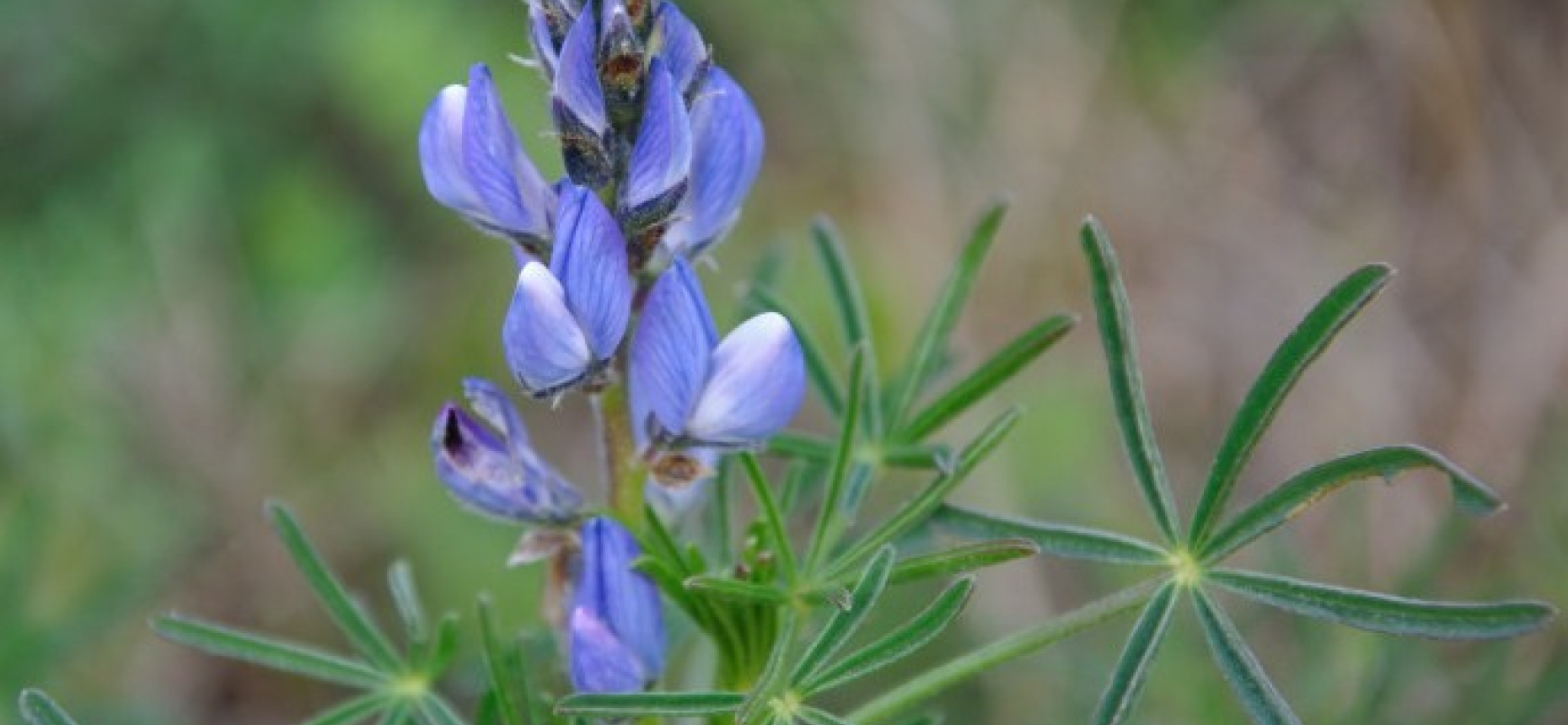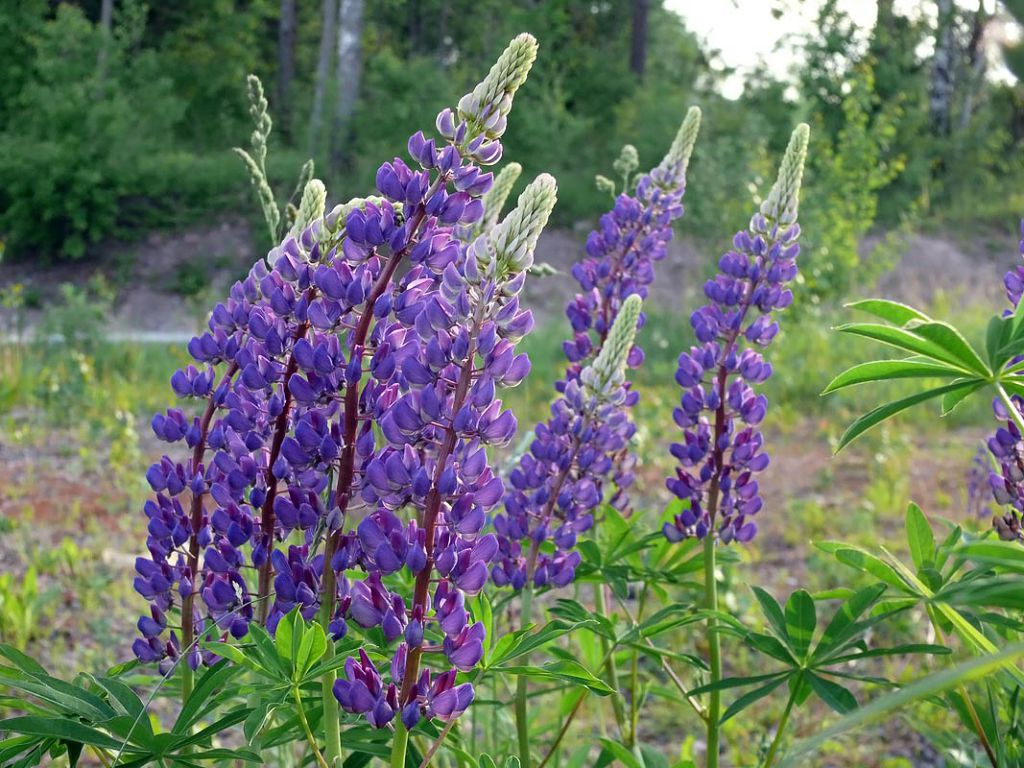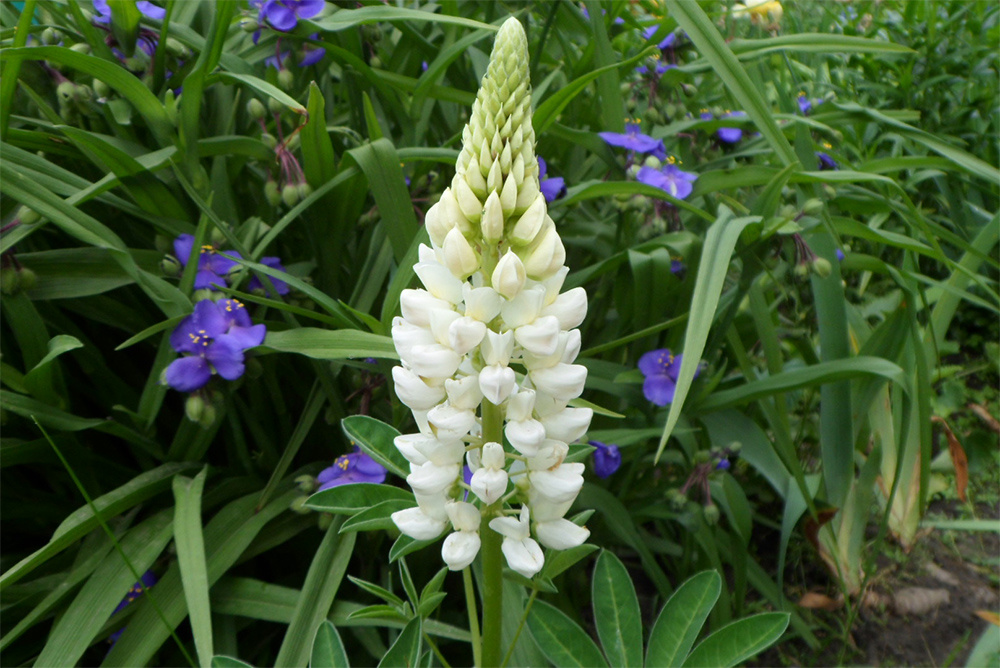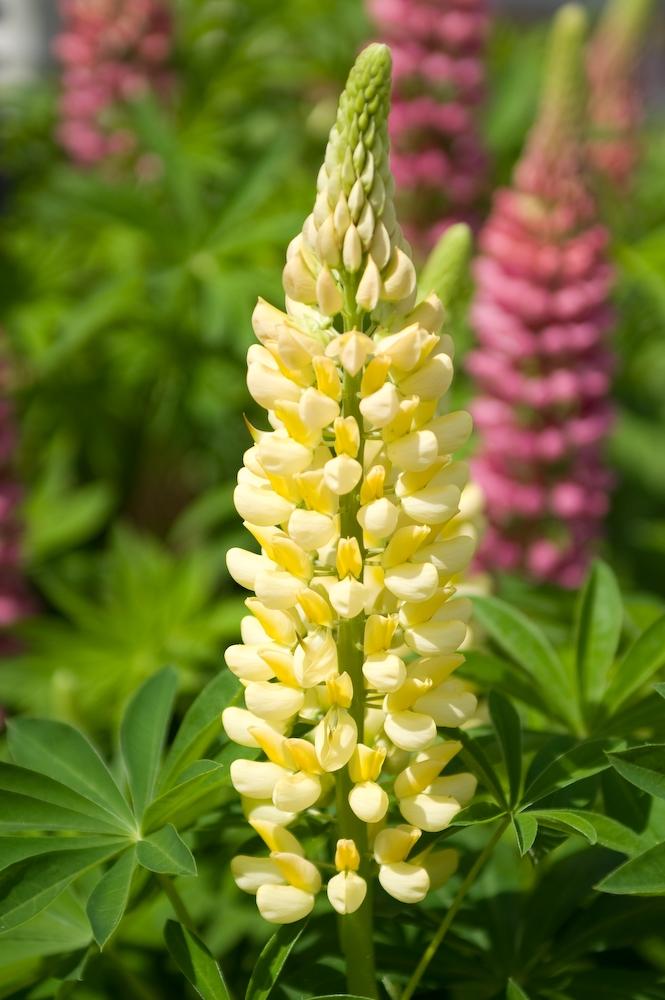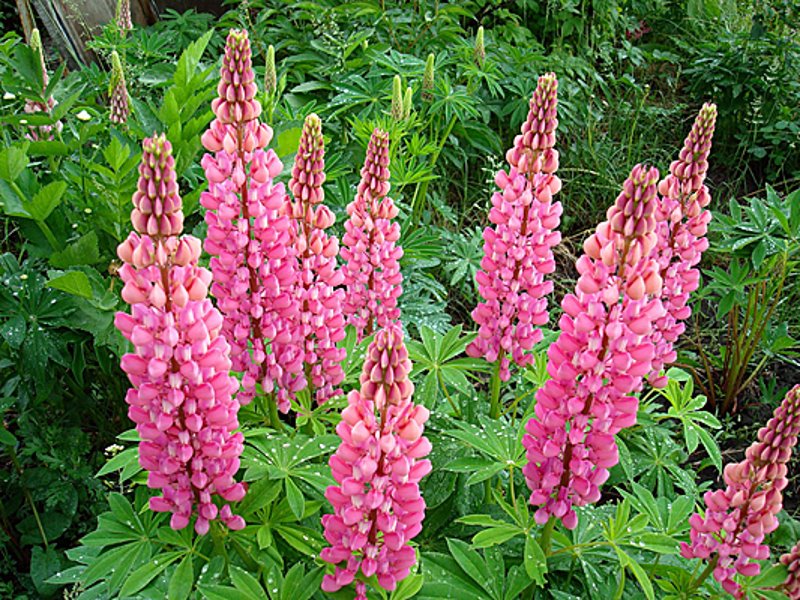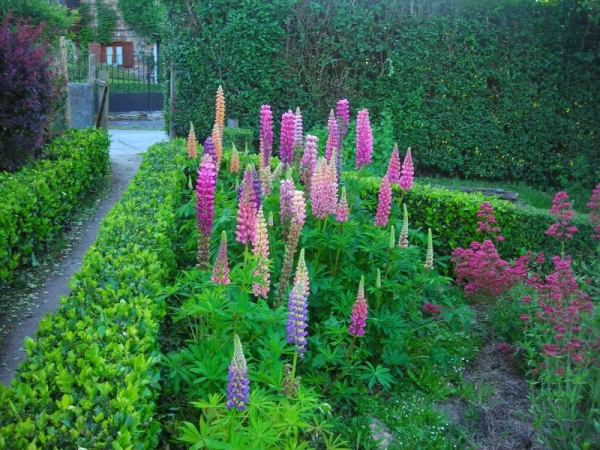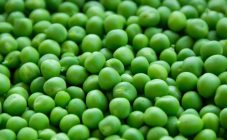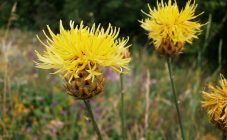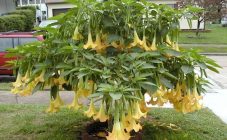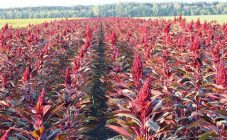Content:
Perennial lupine is a perennial cultivated as a valuable forage plant and as a decoration for a garden plot. From the Latin "lupus" - wolf.
Description
Belongs to the legume family, genus Lupine, from the subgenus Platycarpos. It has gained immense popularity for use in pulp and paper mills, in the production of cosmetics, medicines, soap products and plastics. Gardeners treat it ambiguously - too active growth makes it look like a weed that requires constant control, while it has many positive sides: it is an excellent green manure and an amazing decoration for the garden.
Perennial lupine is the most frost-resistant and unpretentious perennial of the Lupine genus. It grows everywhere, even in the taiga parts of Russia. Included in the list of rare and protected plants.
Lupine is used fresh and dried, in pharmacology, forestry, floriculture, beekeeping. Lupine provides animals with high-protein feed. In some European countries, the milled plant is used as an additive in confectionery. In South America, crushed lupine seeds are added to first and second courses, and in Germany they are used to make diet ice cream.
Seed composition:
- protein (50%),
- oils (up to 20%),
- lupinin,
- lupanine.
Characteristics of medicinal properties:
- reduces the level of bad cholesterol in the blood;
- reduces inflammation in the joints (dressing soaked in decoction);
- polyunsaturated acids in seeds have a beneficial effect on the work of the cardiovascular system;
- antioxidant action;
- helps with prickly heat.
Biological features: genus Lupinus L., in the first year of life forms a basal rosette of leaves, integral development begins at 2 (3) years. Ripens quickly, within 2 months. After mowing, it quickly grows back, capable of producing up to 2 harvests of green mass per season. In one area it can grow up to 10 years.
Lupine multifoliate description:
- semi-shrub plant, from 0.5 to 1.5 m in height;
- multi-stemmed, upright bush;
- powerful, developed root system;
- seeds are small, of various colors (brown, spotted, black, mosaic, 1000 pcs. This is only 20-30 g).
Lupine: narrow-leaved and wild
Narrow-leaved lupine
It is an annual herb growing up to 1.5 m in height. It has been grown in Russia since the beginning of the 19th century, is not as common as the multifoliate lupine, it is grown mainly in the non-chernozem zones of the country.
It is considered a fodder crop and is very rich in protein and oils. Resistant to cold weather, especially at the beginning of the growing season, withstands up to -7 degrees. Found use in medicine as a medicine, vitamin, in the garden used as an insecticide.
Lupine wild
In fact, wild lupine, or field lupine, is a common lupine (yellow, white) that grows in a variety of places. The favorite places of this plant are roadsides, forests and fields. Among the people, for its ubiquity, it was called the Wild Lupine, since it grows like a weed, and does not require much care. Once in the garden, it will take root there forever, and it will be quite difficult to get rid of it.Wild lupine has blue flowers and blooms for a long time.
Types and varieties of culture
The plant is divided into 4 types, which, in turn, include many different varieties (more than 200).
Lupine multifoliate
It is a perennial, cross-pollinated plant. It has a wide range of flowers and is popular for decorative use. North America is considered the homeland, it grows even in the harsh Siberian regions of Russia. Prefers loamy and sandy loam soils.
The most popular new varieties of multifoliate lupine are:
- Schloss Frau (pink lupine);
- Carmenius (red lupine)
- Castellan (violet blue);
- Albus (white lupine);
- Apricot (orange lupine);
- Princess Julianne;
- Rubinkening;
- Gavrish (different color of flowers);
- Roseus;
- Minaret;
- Russell.
It is worth highlighting Russell's lupine - it has larger, catchy flowers. The inflorescences are powerful, bright, reaching half a meter in length. Blooms not as long as normal lupine - 3 weeks starting in June. Normally, seed ripening occurs in August. Grows on any garden soil, prefers sunny places. Not picky about leaving.
Lupine Minaret is considered less attractive, but quite catchy - it is distinguished by openwork leaves and giant pyramidal ears of inflorescences. It blooms for 20-30 days in June, if the dead flowers are removed in time, it will bloom again in August. It is better to sow seeds before winter, after the first frosts, 2 cm deep, sprinkling with peat. It is undemanding to the composition of the soil, light-requiring.
Lupine White
White lupine is a self-pollinating annual with a long growing season. Representatives of this species are capable of reaching 2 meters in height. The leaves of the plant are obovate or oblong, inflorescences in the form of a small brush, white or blue-white. The fruit is a pod containing 3-6 smooth cubic seeds. It is advisable to plant in southern, fairly humid areas. It is considered the most high-yielding legume crop.
Popular types of White lupine: Gamma, Desnyansky, Degas.
Lupine angustifolia (lupine blue)
Blue lupine is an annual, self-pollinating plant, reaching a height of up to 1.5 m. Narrow-leaved lupine, despite its second name (blue), has a different color of inflorescences: purple, pink, white. The seeds are distinguished by an unusual "marble" pattern on the surface, have a round or kidney shape. The flowers of the inflorescences are often blue, less often white. Leaves consist of 5-9 narrow linear leaflets.
Lupine narrow-leaved is distinguished by frost resistance, early maturity and unpretentious care. Less thermophilic than yellow and white lupine, but more demanding on moisture. The yield of green mass is up to 250 kg / ha.
The most common varieties of narrow-leaved lupine: Crystal, Rainbow, Snezhet, Nadezhda, Smena, Vityaz, Siderat 38.
Lupine Yellow
An annual cross-pollinated plant, not exceeding 1 m. Yellow lupine is distinguished by a powerful root system, palmate, elongated, densely pubescent leaves. Spike-shaped inflorescences have a yellow or light orange color, very fragrant. Light - and thermophilic (at -5 degrees the plant dies), demanding to watering. It is rarely used as a decoration for the plot, since the flowers are not remarkable enough, it is valued as a fodder crop (its cultivation occupies 80% of the sown area).
The following varieties are popular among livestock breeders: Prestige, Grodno 3, Nadezhny, Zhytomyr, Fakel, Demidovsky.
White lupine
Annual white-grain lupine is an unpretentious, medium-height plant (30-50 cm), erect, indeterminate, with large green or dark green leaves and beautiful fragrant flowers. The apical leaflet is short, narrow. Inflorescences are bluish-white, the tip of the boat is yellow. Loves light, does not tolerate shaded places, cold-resistant. Reproduces easily independently (self seeding). The transplant is difficult for the plant. Weakly affected by root rot and anthracnose.
Grows well on poor sandy, loamy and clayey soils, does not tolerate an acidic environment. It is moisture-loving and photophilous, in the shade the plant withers. White-grain lupine does not need formative pruning, it is only necessary to remove leafless stems with already faded brushes - a certain kind of stimulation of new flower buds. Breaking off, or mechanical pinching of side shoots, as a way to increase the biological value of seeds in the harvest, is rarely used. Especially on an industrial scale, since it is impossible to process such a huge number of bushes without special equipment. When growing single bushes, this manipulation is possible, but it has a huge disadvantage - the wounds on the stem become an unobstructed gateway for pathogenic organisms to enter the plant.
Alkaloid and forage lupine
According to the content of alkaloids in the whole plant, alkaloid lupines (bitter) and alkaloid (sweet) are distinguished. Bitter lupins are used as fertilizer, sweet lupins are used for animal feed (aboveground part of the plant) and for fertilizer (roots).
The bitterness of lupine depends on the amount of Conium maculatum substance in it, which is contained in absolutely all parts of the plant, the highest concentration is in the seeds (0.6%). This substance is the strongest poison.
Fodder lupine is grown on an industrial scale for use in the diet of birds and animals. The plant does not contain alkaloids (no more than 0.025%). The whole plant is suitable for food - fruits, greens. Hay, silage, pellets and flour are stored from fodder lupine.
Great for feeding poultry, fish and cattle. It is valued mainly for its high protein content, which is easily absorbed by the animal's body. Lupine, in particular the above protein, contributes to the full development, improvement of the quality indicators of meat. Feeding other legumes does not give these results.
Agrotechnics
Lupine cultivation technology on an industrial scale:
- tillage for lupine begins in autumn, harrowing and pre-sowing cultivation are carried out in the spring (if necessary, they are plowed again);
- make phosphorus-potassium fertilizers;
- inoculating seeds;
- sowing seeds simultaneously with cereals.
Sowing seeds in open ground at home:
- sowing begins in April, the soil is prepared in the fall;
- the seeds are buried by 2 cm;
- flowering will come only next year;
- if you plant seeds in the fall, the plant will bloom in August.
Sowing seeds for seedlings:
- prepare containers with a soil mixture (in equal proportions sand, peat and turf soil);
- the seeds are kept in moistened gauze until the sprouts sprout;
- the seeds are buried 1.5 cm, watered and covered with polyethylene;
- after 10-14 shoots appear, the film is removed;
- when 4-6 true leaves appear, the seedlings are transplanted into open ground (about 20-30 days after sowing).
Care consists in watering, loosening and weeding.
In the shade, the grass grows, but the decorative appearance becomes less attractive, the plant is strongly stretched and produces few buds.
It is distinguished by a high indicator of nitrogen-fixing ability - the aerial part and roots accumulate about 20 grams per 1 sq. meter.
Cuttings:
- for cuttings, bushes are used that have reached 3-4 years;
- harvesting is carried out in the spring (root rosettes) and in summer (lateral shoots from the leaf axils);
- cut out the bud of renewal along with the heel or part of the root collar;
- the cutting is planted in sandy soil, choosing a shaded area;
- after 20-30 days, the cuttings are planted in a permanent place.
Lupine is definitely worth your attention. Whatever the purpose of its cultivation, it is useful in many ways: it will become an excellent decoration for a garden, a summer residence, it is perfect as a feed for animals, and it will also improve the quality of the soil.
